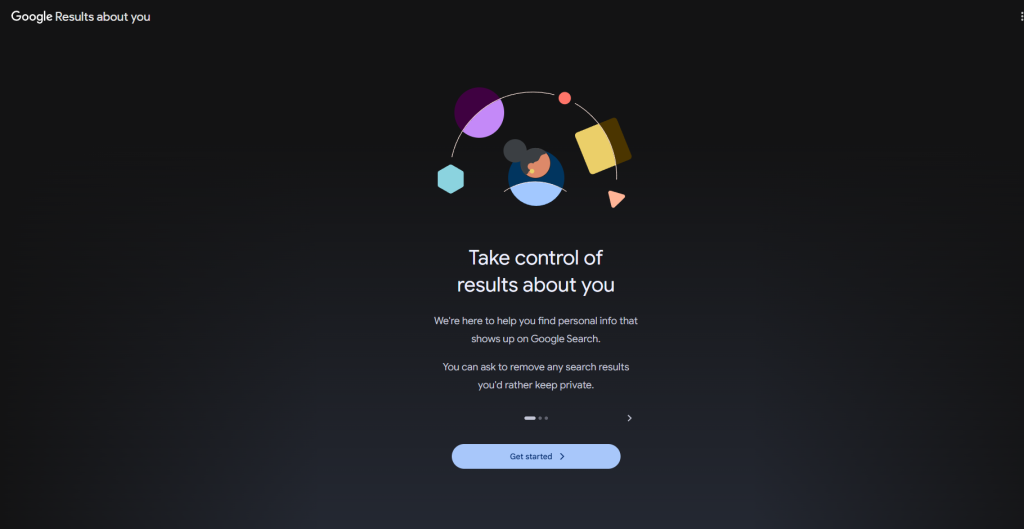Your cart is currently empty!
Google Just Made It Easier to Remove Info About Yourself Online

The exposure of personal information online is seldom an accident. It is typically the work of a discreet but sprawling industry composed of data brokers and people-finder websites. These entities specialize in collecting and collating data from a multitude of sources—ranging from public government records and social media activity to marketing databases. This information is then meticulously assembled into a detailed digital profile, often created and made searchable without the individual’s direct awareness or consent.
Publicly accessible contact information and personal details can open the door to serious risks, including doxxing, identity theft, and targeted harassment. As privacy advocates like the Electronic Frontier Foundation (EFF) have long noted, this constant and quiet collection of data erodes an individual’s sense of personal security. Knowing that a comprehensive file on one’s life is publicly searchable can create a persistent state of vulnerability that extends well beyond the digital realm.
Your New Privacy Toolkit: A Step-by-Step Guide to “Results About You”

In response to the challenges of digital exposure, Google has developed a centralized and user-friendly tool designed to help people regain a measure of control. The “Results About You” feature simplifies the process of finding and requesting the removal of personal information from search results, integrating two key functions into a single dashboard.
The tool’s most significant feature is its ability to act as a digital watchdog. Users can provide specific personal details—such as their name, home address, phone number, and email address—that they want to protect. The system then continuously scans Google’s search index for new web pages that contain this information. When a match is found, it triggers an alert, notifying the user via their preferred method so they can review the finding and take action.
For situations where an individual personally discovers a problematic search result, the tool streamlines the removal process. Instead of navigating complex help pages, a removal request can be initiated directly from the search results page. By clicking the three-dot menu adjacent to any result, an option to “Remove result” appears, funneling the request directly into the management dashboard for tracking. This integration marks a significant improvement in accessibility over older, more convoluted procedures.
Getting Started: A Simple Walkthrough

Activating and using the tool involves a few straightforward steps:
- Access the Dashboard: The hub can be reached in two primary ways. On the Google app for mobile, tap your profile picture and select “Results about you.” On a desktop or mobile browser, you can navigate directly to
myactivity.google.com/results-about-you. - Provide Your Information: Once in the hub, click “Get Started.” You will be guided through a series of prompts to enter the Personally Identifiable Information (PII) you want Google to monitor. The form allows for a full name, as well as multiple addresses, phone numbers, and email addresses.
- Configure Your Alerts: During the setup, you can choose how you wish to be notified of new results. Options include receiving alerts via email, push notifications from the Google app, or both.
- Review and Request: After the initial setup, the system will begin scanning. Any search results it finds containing your specified PII will start to appear in the dashboard for your review. For each item, you can see the source website and the data it contains, giving you the option to “Request to remove” it from Google Search.
Once a removal is requested, the item’s progress can then be tracked within the dashboard, showing its status from submission through to Google’s final decision.
What Google Will (and Won’t) Remove

It’s important to know that this Google tool has very specific goals. It’s not a magic wand to wipe your entire history from the internet. Instead, think of it as a targeted tool designed to protect you from immediate harm. It works best for removing your most sensitive personal info, like your phone number, home address, government ID numbers, or bank account details.
To get the most out of it, you need to understand its two main rules.
1. Google Hides Information, It Doesn’t Delete It
This is the single most important thing to remember. When Google approves your request, it only hides the link from its search results. The original webpage with your information is still out there on the internet.
Think of it this way: imagine Google Search is a popular map that shows the location of a specific document. By approving your request, Google is erasing that location from its map. But the document itself hasn’t been destroyed. Anyone who already has a direct link to it, or who uses a different map (like another search engine), can still find it. To get the information permanently deleted, you have to contact the owner of that website directly and ask them to remove it.

2. News and Public Records Usually Stay
Google has a major exception for information it considers to be in the “public’s interest.” This is a big one. It means that if your personal information is part of a news article, a government website, or an official public record (like a court filing), Google will almost certainly not remove the link.
The company views its role as balancing your privacy with the public’s right to access information. This is why the tool is generally not helpful for trying to remove things like unflattering news stories or other information that is considered part of the public record.
The Bigger Picture of Digital Privacy

Using Google’s tool is a fantastic first step, but it helps to understand that it’s just one piece of a much larger puzzle. The world of digital privacy has different rules and other services available, and knowing about them gives you a clearer picture of your options.
It’s useful to know, for instance, that this Google feature is a voluntary policy, not a law. Google sets its own rules, which is different from the situation in Europe, where privacy laws give people a broader legal “Right to be Forgotten.” This means for many people, including those in the Philippines, Google’s tool is the main option available, but it operates entirely on the company’s terms.
Because the tool has these limits—it only hides links rather than deleting information at the source, and it won’t touch news or public records—some people find they need more help. This is where paid data removal services come in. Since trying to contact hundreds of websites individually is a monumental task, companies like Incogni or Kanary have emerged to do it for you. For a subscription fee, these services act as your own privacy agent, sending out removal requests across the internet. Their goal is a much deeper cleanup, making them a powerful next step for anyone looking for a more thorough solution.
A Mindful Approach to Privacy

Taking control of your digital life doesn’t require becoming a tech expert or fighting an endless battle. It’s more about shifting your perspective and adopting a few guiding principles that make privacy a natural part of your routine, rather than a source of stress.
- Start with the tools you have: Begin with what is easy and already available to you. Features like Google’s “Results About You” or the built-in privacy settings on your social media apps are designed to give you more control. Taking a few moments to explore and activate them is the simplest, most effective first step anyone can take.
- Be intentional with what you share: The best way to manage your digital footprint is to be mindful from the start. Before you post a comment or sign up for a new service, take a brief pause to consider the information you’re giving away. This small moment of intention is one of the most powerful privacy tools there is.
- Focus on what you can control: Trying to erase every trace of yourself online is an exhausting and often impossible task. Use the available tools to handle the most important issues, but also accept that perfect digital privacy is a myth. Peace of mind often comes not from achieving a perfect cleanup, but from actively managing what you can and not stressing about what you can’t.
Ultimately, your digital privacy is not a problem to be solved once, but a practice to be maintained. Like any other aspect of personal well-being, it benefits most from consistent, thoughtful attention. By focusing on these simple principles, you can navigate the online world with far greater confidence and peace of mind.
